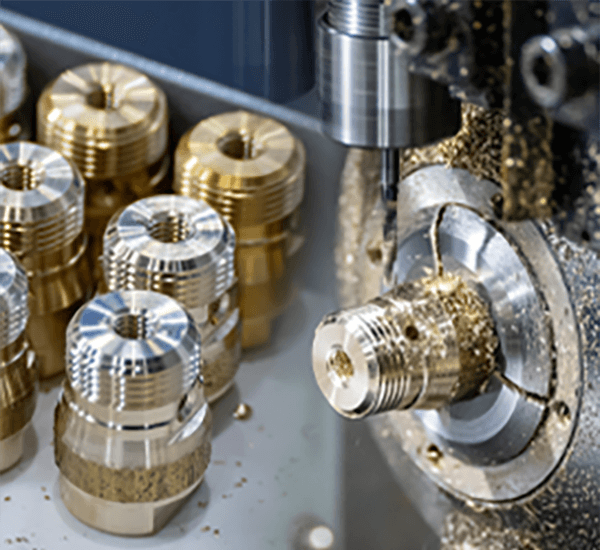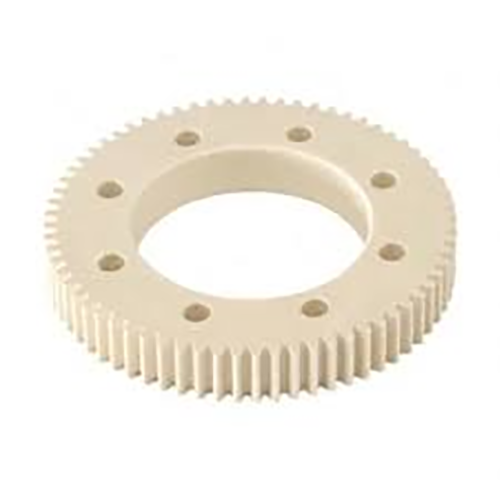
Achieving specified outer texture for a fabricated unit is of paramount importance.
- Drawing callouts communicate precise surface requirements for machined parts
- Designers use Ra (mean deviation) as a numerical indicator of surface roughness
- Understanding these callouts is fundamental for ensuring manufactured parts meet performance requirements
- Chosen finish influences lubrication retention, friction behavior, and part life
- Proper decoding of specifications is critical to deliver the expected finish
CNC Machining: Precision Engineering Defined

CNC machining represents a game-changing method in production employing digital instructions the machinery forms elaborate parts with exactness.
- CNC equipment supports building precise items from many material classes
- The versatility of CNC machining makes it ideal for aerospace, automotive, medical, and electronics
- G-code driven machining maintains reliable consistency across batches
Across R&D to production scale-up CNC machining drives manufacturing evolution
Comprehending CNC Machine Specifications
Parsing spec sheets may feel challenging at initial inspection
In contrast, measured learning and order help you traverse technical specifications
Initiate by spotting principal specs like spindle speed, feed rate, positional accuracy, travel limits, controller
Each metric impacts the machine’s aggregate capability.
Illustratively, greater spindle rpm aligns with softer workpieces; increased feed raises manufacturing pace.
Recognizing these ties supports choosing machines suited to target production
Always examine producer technical literature in detail.
Provided manuals commonly contain clarifying information and define jargon
A Guide to CNC Machines: What You Need to Know
CNC machines are specialized computer-controlled systems used in manufacturing for precise and automated fabrication of various materials They read numerical control code to orchestrate cutter motion and axis control.
- Representative CNC types cover milling tools, turning machines, routers, plasma cutters
- CNC machining processes are highly versatile and can be used to work with a wide range of materials including metals plastics wood and composites
- Moreover CNC platforms enable rapid model creation and small-batch production for SMEs and R&D teams
CNC Basics and Explanations
They exemplify the union of precise mechanics and modern control software Adaptive tools rely on coded programs to manufacture from simple elements to detailed structures Primary notion maps digital geometry to tangible fabricated pieces.
- Numerical control manufacturing
- Code-driven production workflow
This process involves a series of precise movements guided by the computer program Shop technicians tune machining parameters, supervise production, and certify product accuracy.
The Role of Surface Finish in CNC Machining
Meeting set surface quality in CNC work is significant It significantly alters operational behavior and appearance The type of material being machined the cutting parameters used and the post-processing operations all contribute to the achieved surface texture.
Polished textures increase lifespan; rough finishes may lower effectiveness Machine-controlled fabrication offers many methods and cutters to achieve set surface qualities.
- Including selection of alternative tool profiles |carbide alloys|speed settings to obtain particular finish
- Also surface treatments such as grinding and polishing can refine textures
Understanding the relationship between machining parameters and surface finish is essential for achieving optimal results in CNC machining operations.
Understanding CNC Machines: A Beginner's Guide
Programmed machining provides accurate part shaping across multiple material types They follow G-code sequences to generate complex parts reliably A fundamental understanding of CNC machine operation including the role of G-code programming and tool selection is essential for successful machining processes
Applications of CNC machining are incredibly diverse spanning numerous industries such as aerospace automotive manufacturing From fine aerospace pieces to intricate mold geometries, CNC underpins complex manufacturing
Surface Finish Specification Guidelines
Precise surface specification proves essential in CNC machining It verifies compliance with intended functional and aesthetic goals Callouts commonly use the roughness average (Ra) system to denote surface finish Noted in microns or millimeters, the value quantifies average texture height.
Consider needed smoothness and the part’s application to determine finish requirements

Often a polished surface is selected when precise tolerance and fit are required
Alternatively textured surfaces may aid applications needing traction or increased friction
Insert concise surface notes in blueprints to articulate finish expectations Record Ra alongside additional machining recommendations or surface treatments.
Consider that thorough finish callouts underpin quality manufacturing
CNC Machine Types and Their Functions
Numerical control machining comprises numerous machine types engineered for diverse applications They work with CAD/CAM programs to command cutters and deliver accurate component fabrication.
- Milling centers craft intricate contours cavities and surfaces by subtractive cutting
- Lathe machines operate on a rotating axis ideal for producing symmetrical parts with smooth surfaces
- Plasma machines slice thick steel and ferrous metals rapidly using plasma arcs
Select machinery by weighing material, complexity, and tolerance needs Every machine class brings specific strengths that serve sectors like aerospace and automotive.
Realizing Superior Texture with CNC Machining
Creating superior finishes is essential and CNC control systems help produce them By combining feed optimization spindle settings and cutter geometry selection operators reduce patterning and improve finish Furthermore the utilization of high-quality tooling materials and proper lubrication techniques contributes to a smoother finish Appropriate strategy choice combined with accurate setup produces excellent surface outcomes.
Obtaining Surface Quality via CNC Code
Mastering surface finish during CNC programming is crucial for achieving desired quality outcomes Cutting parameter selection—feed, speed, tool geometry—controls surface finish Deliberate parameter selection and optimized lubrication enable near-flawless finishes.
- Additionally routine tool checks and upkeep maintain consistent finish quality Also ongoing tool care and inspection support sustained finish reliability Plus regular inspection and maintenance of tools copyright finishing standards
- To perfect surface results factor in material, roughness, and intended application
- Employing simulation software can help visualize and fine-tune cutting parameters before machining reducing the risk of surface defects
- Furthermore regular tool maintenance and inspection are essential for ensuring a consistent and high-quality surface finish over time
